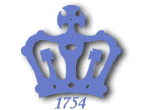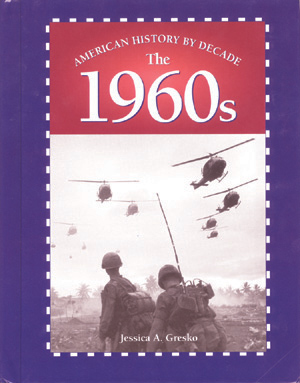|
|
 |
 |
 |
 |
|
BOOKSHELFThe Precocious Writer
Jessica Gresko ’05 wasted no time when she arrived at Columbia in Fall 2001. She immediately began writing for Spectator, and by the end of the year, she was recognized for her outstanding reporting with the Reed Straus Award, one of two awards that Spectator gives each year. Eager to continue writing in the summer, Gresko returned home to Manhattan Beach, Calif., and began working three days a week at a local newspaper, The Daily Breeze. That was when Gresko learned that the publishing company KidHaven Press was seeking writers for a new series, American History by Decade. Curious about writing a history book for children, Gresko submitted an outline of a book that would cover the 1960s. She also wrote and sent in a chapter on civil rights. The publisher felt that her style was right for the series, but asked her to shorten her draft and resubmit it. After the revision, Gresko was given a contract and spent the rest of her summer researching what would eventually become American History by Decade: The 1960s ($23.70, KidHaven Press, 2003). Gresko searched through a variety of materials in her research. She watched documentaries on the space race and freedom riders, read accounts from draft dodgers and protestors, listened to popular music and studied photographs and newspaper articles from events such as Woodstock and the March on Washington, D.C. The book focuses on four developments that characterized the 1960s, which she labeled a “time of conflict and change”: the Civil Rights movement, the protests against the Vietnam War, the hippy culture and the rise of rock music. Gresko’s primary challenge in writing the book was to make it suitable for her targeted audience, third- through sixth-grade readers. Gresko read other KidHaven books for guidance and continually revised her writing to make it simple yet accurate. She felt that in describing some of the historical events, it was important to relate details that kids would enjoy. “To convey the huge number of demonstrators who attended the March on Washington, I explained that organizers made 80,000 cheese sandwiches but didn’t have nearly enough to feed everyone,” she said. “And to explain the Beatles’ popularity, I recounted how one hotel took the band’s bed linens, cut them into one-inch squares and sold them to fans at $10 each.” Gresko finished writing The 1960s during winter break of her sophomore year and made final revisions during spring break. She says that working on the book during breaks helped her avoid conflicts with her course load. The book was published in September 2003. Gresko would like to write another book, preferably a biography, but is looking forward to her internship this summer at the Associated Press’s San Diego bureau. A history and political science major, Gresko’s favorite classes reflect her accomplishments. She enjoyed Alan Brinkley’s history course, “America 1918–1945,” the last course he taught in Spring 2003 before he became provost. She also found “Writing Narrative History” with Simon Schama helped teach her to be a persistent researcher. She learned how to handle archive materials from museums and how to hunt down various sources and information. When not writing for Spectator or doing her school work, Gresko works at Newsweek on Air, a weekly magazine show collaboration between Newsweek and The Associated Press. With extensive experience, Gresko hopes to continue working in journalism after graduation. Peter Kang ’05
|
|
|||||||||||||||||||||||||||||||||||||||||||||||||||||||||||||
